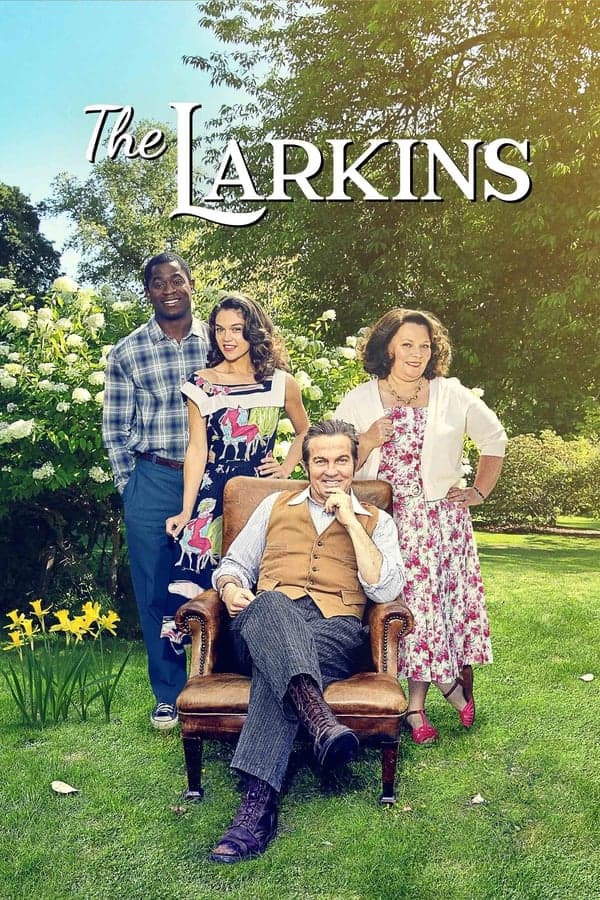
The Larkins
2021 • Comedy, Drama
Set in the late 1950’s, The Larkins follows the golden-hearted wheeler dealer Pop Larkin and his wife Ma, together with their six children, including the beautiful Mariette, as they bask in their idyllic and beautiful patch of paradise in Kent.
Why you should read the novels
If you delight in the escapism of the countryside and the warmth of close-knit families, the source novels by H.E. Bates offer a richer, more immersive experience than the TV adaptation. Bates’s exquisite prose beautifully captures the idyllic English rural landscape, presenting a vivid sense of place and time that can’t be fully expressed on screen. The depth of character development and the subtle humor found in the original books provide an intimacy and authenticity that rewards the careful reader.
The novels dive into the nuances of each Larkin family member’s personality, with layers of wit and gentle satire that explore post-war optimism. Reading the series, you’ll discover unique episodes and internal reflections absent from the television version, further connecting you with the world the author intended. These small yet significant details paint a fuller picture of village life and familial bonds, giving every scene more texture and heart.
Choosing the books allows you to savor the story at your own pace, embracing the nuances and emotional undertones that can be overlooked in a television script. By immersing yourself in the original texts, you join generations of readers who have found joy, wisdom, and laughter in Bates’s acclaimed celebration of life’s simple pleasures.
Adaptation differences
The TV series "The Larkins" (2021) makes several notable changes in adapting H.E. Bates’s novels for modern audiences. One of the most apparent differences is the emphasis on contemporary attitudes and diversity, which are less pronounced in the source books, reflective of their mid-20th century origins. The television version updates some character backgrounds and introduces new subplots that appeal to today’s viewers, often giving supporting characters expanded or reimagined storylines.
Additionally, the pacing and structure of the series differ from the books. Bates’s novels unfold at a leisurely, episodic pace, with much focus on mood and descriptive writing, while the TV series employs tighter plotting to fit the demands of episodic television. This sometimes means compressing or omitting events, affecting the nuance and depth of certain relationships and settings.
Character portrayals also diverge between page and screen. For example, the depiction of Ma Larkin and Pop Larkin may be more caricatured or amplified on TV for comedic effect, whereas the books often present them with greater subtlety, revealing complexities and motivations through internal monologue. The romantic dynamics, particularly between Mariette and Charley, also play out differently, with the adaptation sometimes streamlining or altering their development to suit television conventions.
Lastly, key themes and tones receive different treatments. The novels exude a subtle subversiveness, sometimes gently satirical toward post-war British society and class relations, which can be downplayed in the more universally heartwarming, family-friendly TV adaptation. Some themes are simplified or reinterpreted for broader appeal, shifting the balance between authenticity and entertainment. This results in two distinct experiences: one deeply rooted in Bates’s literary style, the other tailored for contemporary television audiences.
The Larkins inspired from
When the Green Woods Laugh
by H.E. Bates
A Breath of French Air
by H.E. Bates
A Little of What You Fancy
by H.E. Bates
Oh! To be in England
by H.E. Bates
The Darling Buds of May
by H.E. Bates



